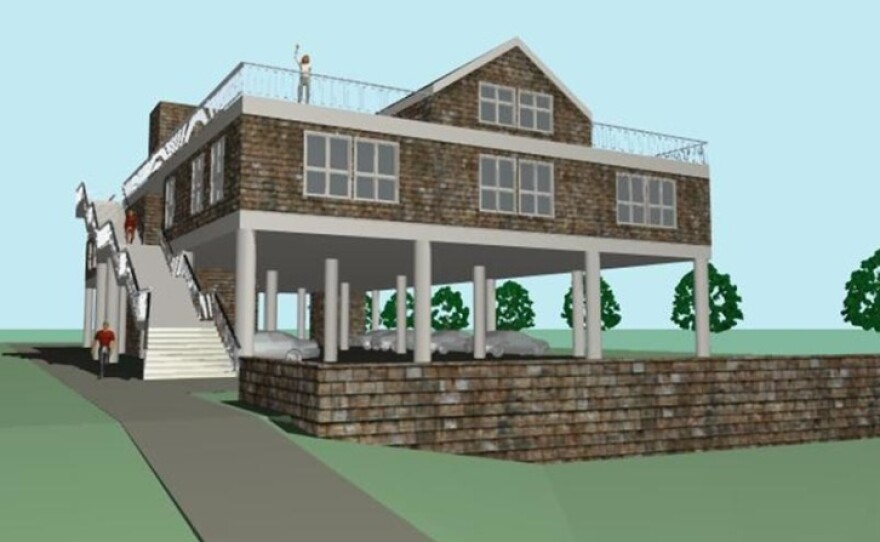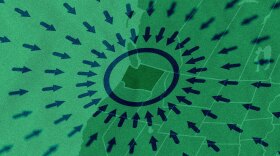http://stream.publicbroadcasting.net/production/mp3/kplu/local-kplu-961924.mp3
If you’re near the coastline and a major earthquake strikes, the advice as always is to scramble for higher ground. But sometimes, high ground is far away. For example, if you’re in Ocean Shores or Seaside, Ore., the best option could be to head for the rooftop of a sturdy building, if there is one.
In Westport, and communities along the Northwest coast, the horrible and gripping images of destruction from the Japanese earthquake and tsunami are still top-of-mind. In this fishing and beach resort town, retiree Linda Orgel is one of hundreds of coastal residents spurred to become better prepared. That interest is being channeled into planning and design meetings for a possible string of manmade refuge towers.
“You look at some of those pictures and you could just picture Westport or Grayland, the same thing. It would just sweep right across the peninsulas,” says Orgel.
Westport apartment manager Harold Gray assumes when the "Big One" hits, the roads leading inland or to the hills will be impassable. “We live down toward the docks. You wouldn’t have the time to get to high ground. It just wouldn’t happen. This gives us another option, which is what we need because high ground is far away,” says Gray.
A four-year federal grant to Washington State’s Emergency Management Division is paying for conceptual design work on so-called “vertical evacuation structures.”
Examples could include:
- a tower that doubles as a bird viewing or whale-watching platform
- a tall earthen berm along a sports field, you on which you could place bleachers
'Project Safe Haven'
The University of Washington is helping to facilitate community brainstorming in low lying towns along the outer coast. UW hazard mitigation expert Bob Freitag says the structures need to have multiple uses.
“These towers really can’t be single purpose to have any lasting effect. They would be ignored. They’ll be an eyesore. They have to be part of the community," says Freitag.
(The project has been engaging the community through a Facebook page as a means to get more input).
In Southwest Washington’s Pacific County, meeting-goers decided they wanted 13 berms, five towers and two parking garages spaced along the coastline to give people the means to shelter from a tsunami.
What a UW researcher learned in Japan
The only place in the world that’s actually done this sort of thing is Japan. Last month’s tsunami provided the first real world test of manmade tsunami evacuation structures. Coincidentally, a University of Washington tsunami researcher was in northern Japan at the time. Professor Jody Bourgeois says fleeing up a reinforced concrete building seems to have worked most of the time:
“In some cases the building was not as high as the tsunami, which was larger than the design was.”
Bourgeois says in the town of Minamisanriku, the tsunami overtopped a three story office building. It was designated as a safe haven, but around 20 people were swept away. “I would say if you’re going to build a vertical evacuation structure, the major cost would be in the structure itself. Adding another floor is not the major cost. So I guess after this event I would say, add another floor. Make it higher," says Burgeouis.
A plan, then perhaps money to implement
None of the Northwest beach towns thinking about this has the money to build a tsunami safe haven. But first things first, says Washington Emergency Management Division program manager John Schelling:
“In my experience, it is really difficult to obtain any kind of resources or funding without having a plan. That is really what this project is designed to do.”
Where architects come in
In vulnerable Seaside, Ore., officials are discussing whether the roof of an expanded convention center could double as a tsunami refuge. Nearby Cannon Beach needs a new city hall. Some residents are pressing to elevate the new building on sturdy concrete stilts so that it could potentially shelter one thousand or more visitors and locals from a tsunami. But choosing a more rugged design doubles the cost from $1-2 million to $3-4 million, according to an architect and former mayor.
As for Japan, a more detailed survey of what worked and what didn’t awaits an “all clear” from emergency responders. They haven’t yet finished looking for bodies in the rubble there.









